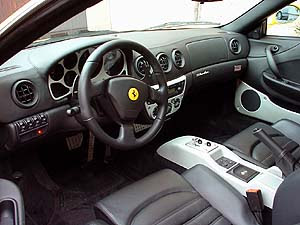Here's some basic advice, plus 22 tips to help you protect yourself and get the best value for the money you spend on automobile coverage.Your car insurance rates are based on a few factors you can't readily change -- your sex, age, marital status and where you live -- and many that you can -- your credit scores, what you drive, how well you drive and how much coverage you buy.
Here's how to get the best deal.
First, let's review the basics. Details vary from state to state. (See "Shopping for auto insurance.")
* Liability insurance pays for injuries and property damage caused by a crash if an insurance adjuster determines you were at fault. It does not cover your injuries or those of other people on your policy, or damage to your vehicle. State minimum requirements provide inadequate protection. Buy no less than $100,000 per person, $300,000 per accident and $50,000 for property damage, or no less than $300,000 if your policy has a single limit. You are personally liable for claims that exceed your coverage, so buy even more if you can, and consider an umbrella policy.
* Uninsured/underinsured motorist protection covers injuries to the occupants of your car -- and property damage in some states -- if the other driver has no insurance or too little.
* Collision insurance pays for damage to your vehicle in an accident. If your car is totaled, you'll get what the insurer considers the pre-crash market value of your car, minus your deductible. To get a general idea of what that may be, check the Kelley Blue Book private-party price or visit the Web site of the National Automobile Dealers Association. You can pay extra for replacement-cost coverage for newer cars.
* Comprehensive insurance covers theft of your vehicle and noncollision damage to your car, as well as animal collisions. You may be eligible for lower rates if your vehicle has anti-theft and tracking devices.
* Medical or personal-injury protection provides coverage for you and your passengers, regardless of fault. You may not need this insurance if you have good health insurance.
* Twelve states have no-fault insurance, which generally covers the insured person's injuries and property damage no matter who is at fault.
* Consider gap insurance if you owe more on your car than it's worth.
Reduce your rates
The company you select and the coverage you buy can greatly reduce your rates.
* Shop around. Check rates online at InsWeb.com, call companies, and consult an agent through the Independent Insurance Agents & Brokers of America. Rates vary greatly depending on a company's operating expenses, history of claims and formulas for setting premiums. Check a company's financial status and consumer record. The last thing you need is to go cheap and then find it's all but impossible to file a claim.
* Increase your deductibles on comprehensive and collision coverage to an amount you can cover out of pocket.
* Consider dropping both if you own your vehicle outright and the combined annual cost for that coverage is more than 10% of what you would get if you car were totaled. (See "Dump the insurance on your clunker.")
* Ask your insurer about all available special discounts.
* If you're switching insurance companies, do it in writing. Your credit scores will suffer if you're canceled for nonpayment.
Control yourself
Your behavior on and off the road has a bearing on your rates.
* Pay all bills on time. Your premiums are based in part on your credit scores or an insurance risk score based on your credit reports. (See "The new math of car insurance.") TransUnion's TrueCredit will provide your auto insurance risk score for $9.95.
* Drive defensively, and avoid distractions such as text messaging or talking on a cell phone. One speeding ticket may not raise your rates, but an accident you caused probably would -- generally by 40% of the company's base rate.
* Don't drink and drive. (See "DUI: The $10,000 ride home.")
* Don't lend out your car. If your friend wrecks it, your rates will go up. If your uninsured friend wrecks your car, you'll be liable for claims exceeding your policy.
The type of vehicle you drive affects your rates. * Check the cost of insuring that sports car before you buy it. You'll pay higher premiums for a vehicle with higher collision-damage costs or that's attractive to thieves. Use MSN Money's comparison tool. And no, it doesn't cost more to insure a red car.
* High-tech items are more expensive to replace after a crash. (See "High-tech cars mean high-priced repairs.")
The deal on discounts
Factors such as age, how much you drive, where you live and, sometimes, what you do for a living affect insurance premiums. You can take some steps to get a better rate.
* If you get married, you'll get a discount and benefit from combining policies. (See "Paying too much for car insurance?")
* People 55 and older get a discount for taking a driving class.
* Adding your newly licensed teen to your policy will increase your premiums 50% to 200%. One way to reduce costs: Buy a beater and list your child as the driver. Teen drivers can get discounts for drivers ed courses or good grades. (See "Cut the cost of insuring your teen driver.")
* You may get a discount if your child attends college away from home.
If you wreck your car
If you've been in a collision, tell your insurance company for your own protection, even if injuries are not readily apparent. Informing the company doesn't mean you're filing a claim.
* If you disagree with the value assigned to your totaled vehicle, provide quotes from local dealers and proof that your vehicle was well-maintained. (See "12 secrets your car insurer won't tell you.") Still unsatisfied? Your options are mediation, arbitration and, finally, a lawsuit.
* Twenty-eight states require insurance companies to pay the sales tax on a replacement vehicle, based on the settlement value of your totaled car. Request it, as well as registration and title fees, wherever you live.
* In 14 states you can get payment for the "diminished value" of your damaged car.
* If the driver at fault in a crash is uninsured, consider "stacking" or collecting on all of your policies that have uninsured/underinsured motorist coverage to fully cover the damage, unless state law prohibits it.
* Body shops may be tempted to cut corners to meet insurance companies' pricing requirements. Check Assured Performance Collision Care for qualified repair shops. (See "7 things auto-body shops won't tell you.")
* If you cause an accident, does your policy require you to pay the difference between generic and original-equipment manufacturer parts? If someone else caused the accident, request original-equipment parts for your repairs.
source









